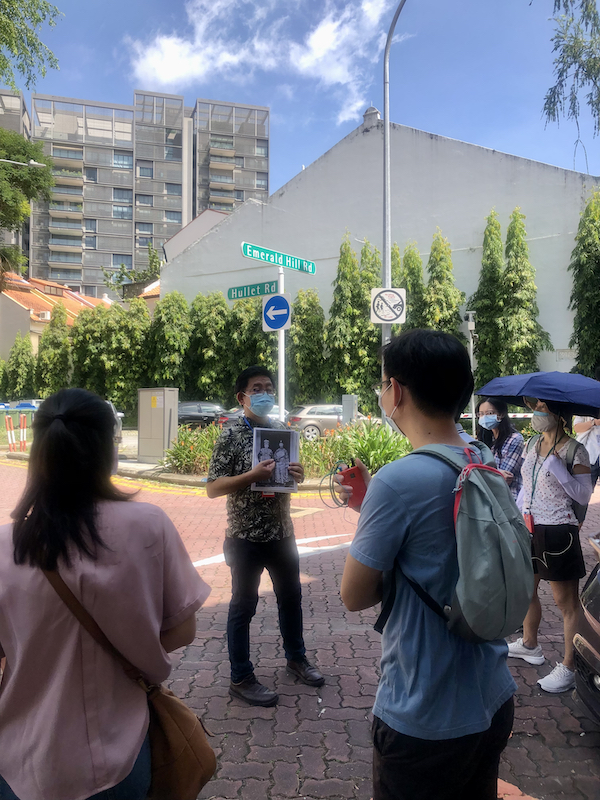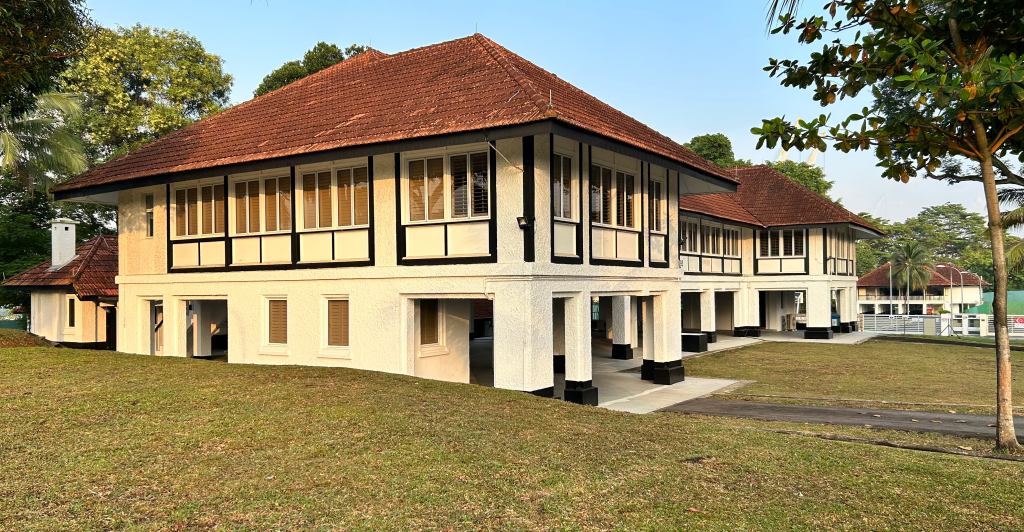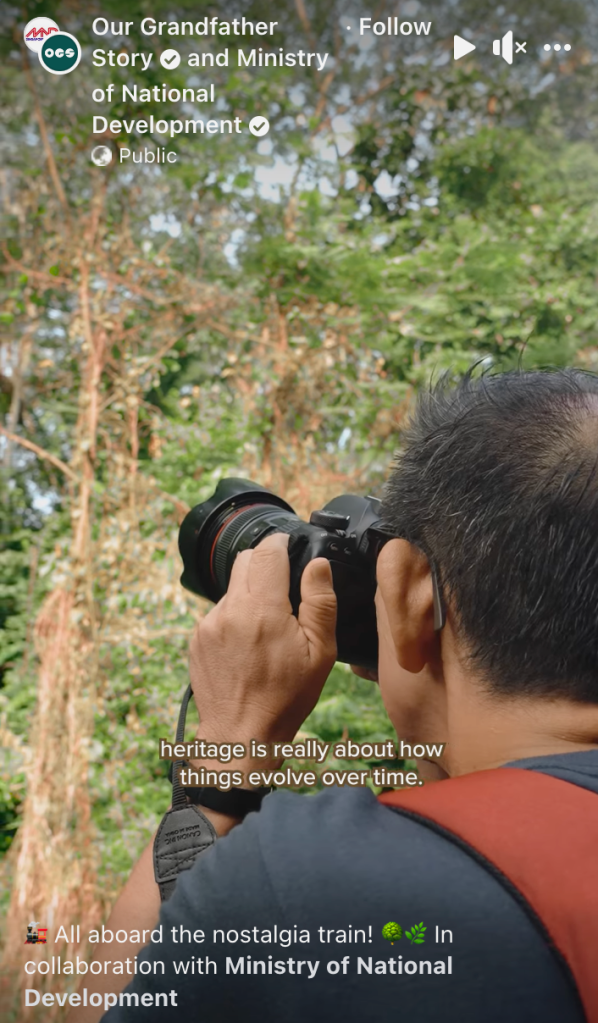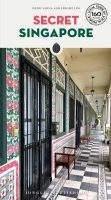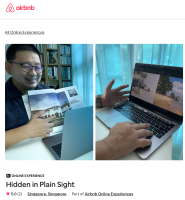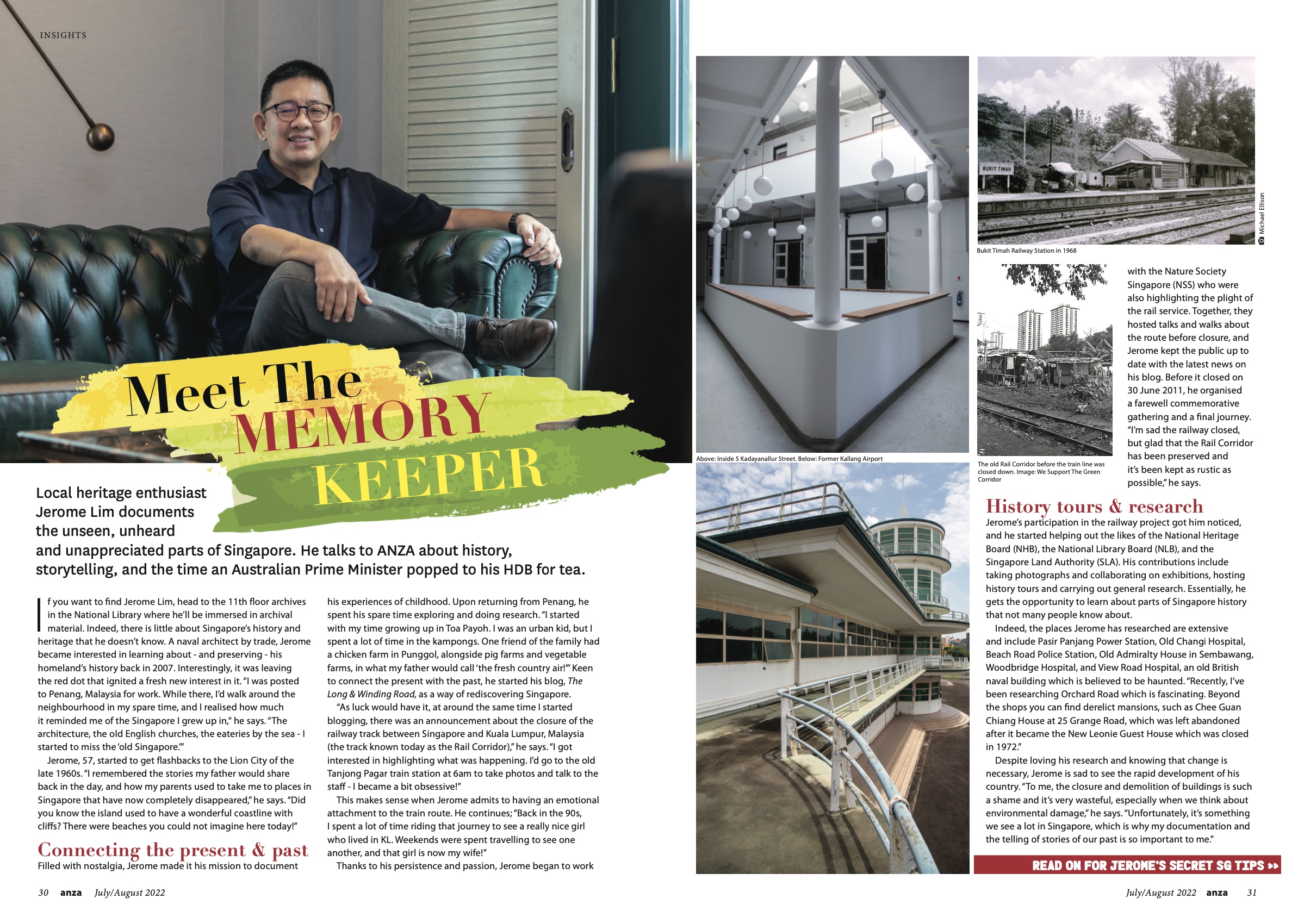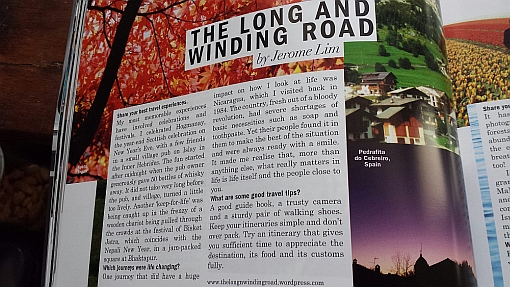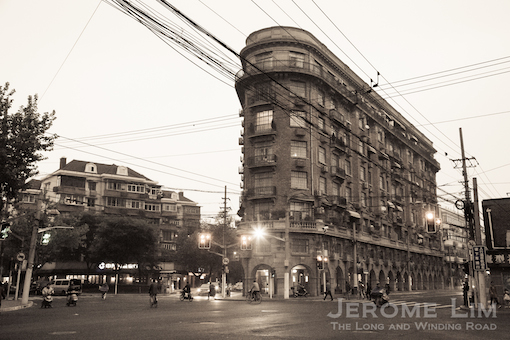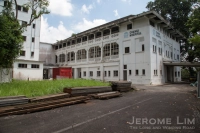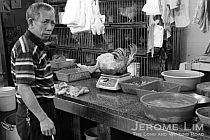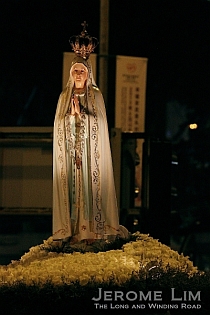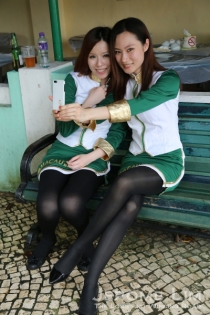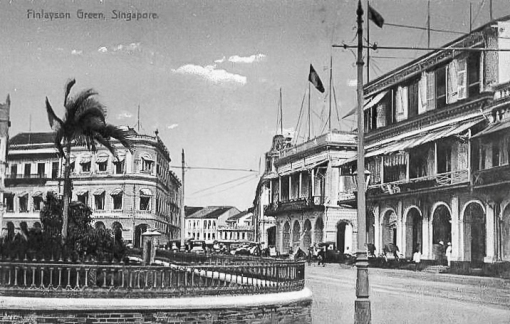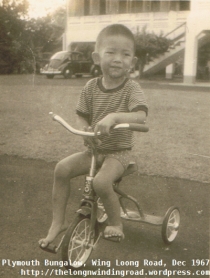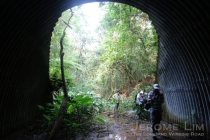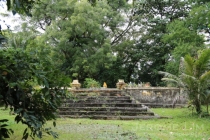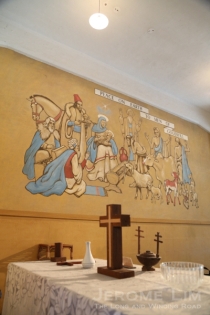From Saturday 27 April 2013, visitors to Marina Bay Sands’ ArtScience Museum will get to step some three thousand years back in time into the fascinating journey which is somehow filled with much intrigue and mystery that is taken by the ancient Egyptians into the netherworld.

A funerary stela at Mummy: Secrets of the Tomb. The exhibition provides visitors with a journey into the Ancient Egyptian netherworld.
The exhibition, for which the ArtScience Museum has partnered with the British Museum which has a long association with the study of Ancient Egypt and the world’s largest collection of objects from the period, is one that not only brings artefacts such as mummies, mummy cases, and funerary objects into a museum setting, but also peels away at the veneers which reveal the many secrets associated with the Egyptian view of the afterlife. A huge bonus is the opportunity the exhibition provides to look right inside a 3,000 year old mummy, that of a high priest of the Temple of Karnak, Nesperennub, through a 21 minute 3D movie which made its debut at a media conference held at the musuem yesterday, to discover the secrets that the well preserved mummy, still tightly wrapped in its elaborately made and decorate cartonnage cage, holds.

Step into the world of Ancient Egypt at the ArtScience Museum’s exhibition Mummy: Secrets of the Tomb.
The film which I thought is the highlight of the exhibition, is one that could only be made through state-of-the-art CT scanning technology. This allows a non-intrusive “unwrapping” of the mummy to be made without any damage to the cartonnage or the delicate tissues of the mummy itself and provides a better understanding of the priests life and death. The resulting 6,500 images that were produced during the extensive scanning was combined with computer visualisation techniques and made into the very insightful 3D film narrated by acclaimed actor Patrick Stewart. The film is included with the admission into the exhibition.

The mummy of Nesperennub – the subject of the 3D movie.

Mr Neal Spencer, Keeper of the British Museum; Mr Ross Leo Associate Director of the ArtScience Museum; and Dr John Taylor, Assistant Keeper of the British Museum at the media conference.
With more than 100 artefacts which includes 6 mummies on display, the exhibition is in itself one that will surely captivate. The printed backdrops at the first two of the five galleries, Ancient Egypt and Life in Ancient Egypt, takes the visitor into the world where the journey into the netherworld begins – the world of the living or at least the one which is visible to the living. The artefacts in these two galleries include replicas of the famous Rosetta Stone and the head of a statue of King Amenhotep III, as well as mummies of a cat, an ibis several figurines and a water receptacle and ladle that would have been used for purification rituals by a priest like Nesperennub

The Life in Ancient Egypt Gallery takes you into the world where the journey into the netherworld begins – in the land of the living.

Another view of the Life in Ancient Egypt Gallery – with its huge backdrops which take you right into Ancient Egypt.

A replica of the British Museum’s Head of Amenhotep III at Ancient Egypt.

A water receptacle.

The mummy of a cat.

And that of an ibis.

The key of life – an ankh.

A stela with the depiction of the god Amun-Ra.
The gallery which I found most intriguing is the Living Forever gallery – which looks at how the Egyptians send off the dead into the afterlife, what they provided for, and the beliefs and practices involved through the many interesting artefacts that are on display. One that was very interesting is a papyrus which is a page containing the judgement scene from the Book of the Dead – on which the concept of Judgement (a recurring theme in many religions) is seen from the Ancient Egyptian perspective where the heart which was thought to weigh as much as a person’s wrong doings upon death is balanced with a feather of truth.

A papyrus with the Judgement Scene from the Book of the Dead.
That concept also reveals a little more about some of the objects that would be placed in the mummy such as amulets meant to protect the spirit in afterlife. Mummification which involves the removal of the dead person’s organs and the preservation of them in jars or in the time of Nesperennub, wrapped in linen and placed back in the body cavity, would have left the heart preserved in place – the heart was thought to be the most important organ (the brain was thought to be insignificant and was drained away). Among the amulets on display are several scarab beetle shaped ones representing the heart which are placed next to the organ, including one inscribed with a verse. These are designed to protect the heart at Judgement – so that it doesn’t reveal the misdeeds of the person.

Heart amulets (in the shape of the scarab beetle – thought to represent the heart) to protect the person during Judgement.
Another important item found in the tomb of those of higher status is that of the Shabti – small figurines which are servants bestowed on the dead person for his afterlife – so that work on the fields could be carried out by them and a coffin in which the figurines are placed in. Interestingly we find out, a total of 401 Shabti would accompany a person into afterlife – one for each day of the year plus additional ones required by the complex system of supervisors the Ancient Egyptians had in place to manage their servants.

Shabti on display.

A close-up of the Shabti.
Also on display in Living Forever, are several Stelae, as well as a few mummies including that of the linen wrapped mummy of Shepenmehyt, the mummy of Tjayasetimu in its cartonnage case, the mummy of Padiamenet, and a model of a funerary boat – used to carry the dead of high status down the Nile. An interesting thing I learnt in hearing about the boat was the practice of burying the dead on the western side as the sun sets in the west and it was the belief that it makes a journey through the netherworld

Round-topped funerary stela of a descendant of Takelot III.

Mummy of Padiamenet showing an undecorated extension at the foot of the cartonnage.

The inner coffin of Seni. At the time of Seni, the more well to do would have had their inner coffins encased in a stone outer coffin.

The mummy of Tjayasetimu in a cartonnage case, with the mummy of Shepenmehyt next to it.

The mummy of Shepenmehyt.

The model of a funerary boat with a spell translated from the Book of the Dead.

End of a wooden coffin.
It is in one or the two remaining galleries where an interactive area – the Embalmer’s Workshop can be found. That is where exhibition-related workshops included in the price of admission, are conducted. One of the workshops, The Secrets of Embalming, provides visitors with a demonstration of the very embalming and preservation process – which together with the very elaborate mummification process can take as long as 70 days to complete.

The Secrets if Embalming Workshop.

Showing how the brain is drained through the nasal passage using a brass hook like implement.
The other workshop, Amulets for the Afterlife, is one that would interest many. The hands-on workshop provides an opportunity to make clay-baked amulets – similar to the ones placed in the mummy or in the linen of the mummy as it is wrapped to protect it in its afterlife. The younger visitors might also be interested to know of the Activity Quest – which provides children of three different age ranges with the chance to take a journey through Ancient Egypt through a series of challenges in each of the galleries, armed with quest bags filled with tools for the mission – which families or school-groups can loan during the visit. The bags are aimed at children of three different age groups: those of ages between 3 and 6, primary school children of ages 7 to 12 and secondary school going children of ages 13 to 16.

A peek into the contents of the activity filled quest bag.
The last gallery, the Mummy of Nesperennub is where the story of his journey into the afterlife comes to its conclusion and where we find his mummy in a beautifully decorated cartonnage case, the coffin in which the mummy was placed in, as well as a reconstructed head of Nesperennub … a head you will find out why from the 3D movie, on which a clay bowl was attached to.

The coffin of Nesperennub.

Detail on the painted cartonnage case of the mummy of Nesperennub.

A reconstruction of the head of Nesperennub.
Mummy: Secrets of the Tomb exhibition is scheduled to run from 27 April to 4 November 2013 at the ArtScience Museum. For information on the exhibition and admission charges to the exhibition, do visit the ArtScience Museum’s website. To mark the opening weekend of Mummy: Secrets of the Tomb, the British Museum’s Dr. John Taylor will conduct four guided tours and two lectures on ancient Egypt at ArtScience Museum, all of which is complimentary to exhibition ticket-holders. Through the guided tours, Dr. Taylor will provide exhibition insight and details regarding ancient Egyptians’ beliefs, customs and how they worshipped. His lectures will include a look into the evolution of modern mummy research and an in-depth presentation on ancient Egyptian rituals.
Opening Weekend Programme:
Saturday, 27 April 2013
Curator’s Guided Tour
(11:30am and 5:30pm; beginning at the first gallery of Mummy: Secrets of the Tomb)
Join Dr. John Taylor from the British Museum as he leads you through the exhibition, revealing fascinating facts about the life and beliefs of ancient Egyptians.
Curator’s Talk
(2:30pm – 3:30pm; held on Level 4 of ArtScience Museum)
Investigating Egyptian Mummies Through Virtual Unwrapping
Dr. John Taylor from the British Museum will trace the development of mummy investigation from its early days to the non-invasive methods of today.
Sunday, 28 April 2013
Curator’s Guided Tour
(11:30am and 5:30pm; beginning at the first gallery of Mummy: Secrets of the Tomb)
Join Dr. John Taylor from the British Museum as he leads you through the exhibition, revealing fascinating facts about the life and beliefs of ancient Egyptians.
Curator’s Talk
(2:30pm – 3:30pm; held on Level 4 of ArtScience Museum)
The Horizon of Eternity: Living and Dying in Ancient Egypt
Dr. John Taylor from the British Museum will describe in detail the importance of rituals and the relationship between men and gods in ancient Egypt.
For a complete listing of dates and times with all ArtScience Museum programming, please visit: www.marinabaysands.com/ArtScienceMuseum.











































































































































































































































































































